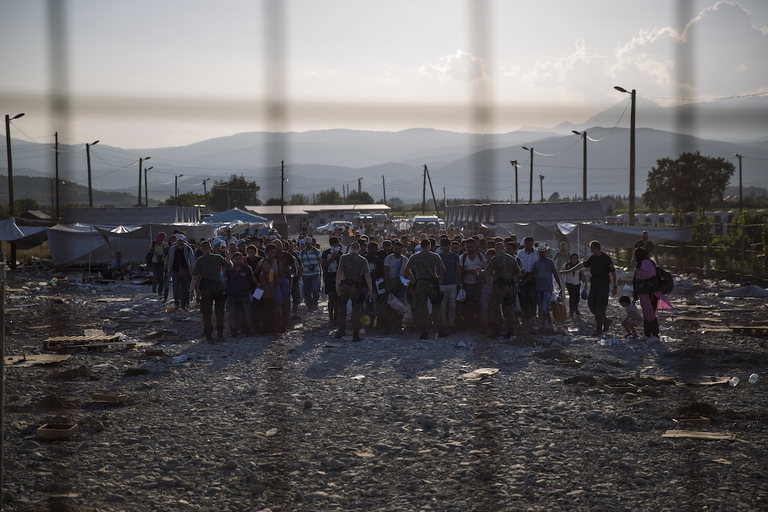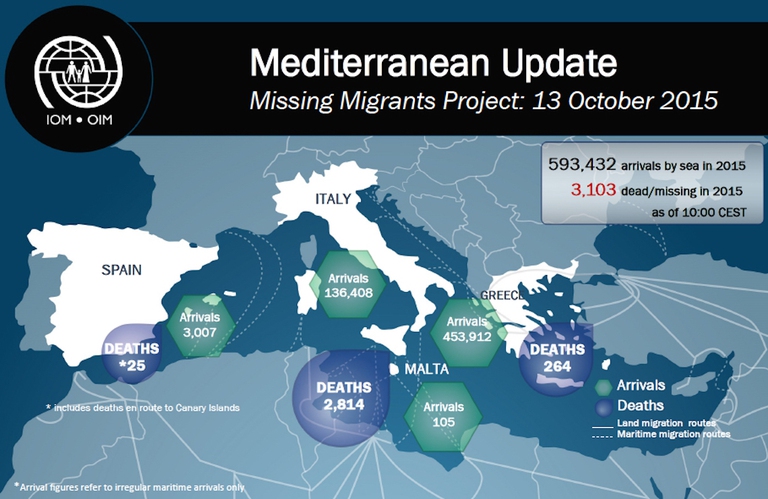
The Louise Michel is the humanitarian rescue ship saving lives in the Mediterranean. Financed by the artist Banksy, it has found a safe port in Sicily.
A riferire le cifre è l’International Organisation for Migration. L’agenzia Frontex aggiunge: “Più di 700 mila migranti arrivati in Europa nel 2015”.
710,000 migrants crossed the European Union’s external borders in the first nine months of 2015. It is a figure significantly higher than that registered in 2014, when migrants didn’t exceed 282,000. Such data have been released on 13 October by Frontex (European Agency for the Management of Operational Cooperation at the External Borders of the Member States of the European Union), which identified Greece as the country affected the most by migratory inflows, with about 350,000 arrivals from January 1st to date.
These figures portrait a dramatic reality, with a tremendous number of people pushing the external borders of the Old Continent, making of the Mediterranean Sea a crossroads of getaways, dreams, hopes, and, unfortunately, continuous tragedies. However, Frontex’s data are less alarming than the calculations provided by the International Organisation for Migration (IOM), according to which 4,500 people daily arrived to Greek coasts until the end of September, with an average of 7,000 people per day in the first few weeks of October.
Migrants choose the Greek route due to logistic factors: Libya is registering a shortage of available boats, which contributed to limit departures headed to Italy (the country registered a sharp decrease: 12,000 people entered Italy in September). On 6 October, Greece’s Prime Minister, Alexis Tsipras, together with Austria’s Premier Werner Faymann visited the island of Lesbo, one of the most affected by inflows, in the Aegean Sea. The two leaders called on the European Union for help: during the day they were on visit on the island, 7,500 migrants arrived. In the first hours of the following day, some of them managed to reach Europe on board a dinghy, raising amazement and emotion among those who saved them.
According to Frontex, Eritreans were the most numerous among the people using this route. The IOM reminds that many of them have to pay high “fares” to smugglers. Then, the country of origin marks the difference: “Once refugees disembark, their origin is a decisive factor to understand their future,” said the organisation. “Syrians are traveling quicker than other nationalities from the Greek islands to the Macedonia border because they can afford to, sometimes paying up to 700 euros ($796.15) for a taxi from Athens to the border. Afghan refugees tend to spend longer traveling through Greece and many have to work or borrow money to afford the journey”.
Siamo anche su WhatsApp. Segui il canale ufficiale LifeGate per restare aggiornata, aggiornato sulle ultime notizie e sulle nostre attività.
![]()
Quest'opera è distribuita con Licenza Creative Commons Attribuzione - Non commerciale - Non opere derivate 4.0 Internazionale.
The Louise Michel is the humanitarian rescue ship saving lives in the Mediterranean. Financed by the artist Banksy, it has found a safe port in Sicily.
Venezuelan refugees are vulnerable to the worsening outbreak in South America: while coronavirus doesn’t discriminate, it does affect some people more than others.
In the midst of India’s coronavirus lockdown, two dozen people lost their lives in a desperate bid to return home: migrant labourers forced to leave the cities where they worked once starvation began knocking at their doors.
Behrouz Boochani returned to being a free man during the course of this interview. The Kurdish writer was imprisoned by the Australian government in Papua New Guinea for six years.
The Global Compact for Safe, Orderly and Regular Migration was signed by 164 nations in Marrakech. This is what the non-binding agreement that encourages international cooperation stipulates.
The winners of the World Press Photo 2019 tell the stories of migrants in the Americas. From the iconic image of a girl crying on the border between Mexico and the United States to the thousands of people walking from Honduras towards a better life.
The Semìno project is a journey of discovery through different countries’ food habits, offering migrants employment opportunities and allowing us to enjoy the properties of vegetables from all over the world.
Travelling across the new route used by migrants to cross the Balkans and reach Trieste in Italy, a reportage that documents the social, economic and political changes of the countries along the way.
The countries hosting the most refugees aren’t the wealthy, Western ones. An overview by NGO Action Against Hunger reminds us that refugees and internally displaced people are far from being safe.









